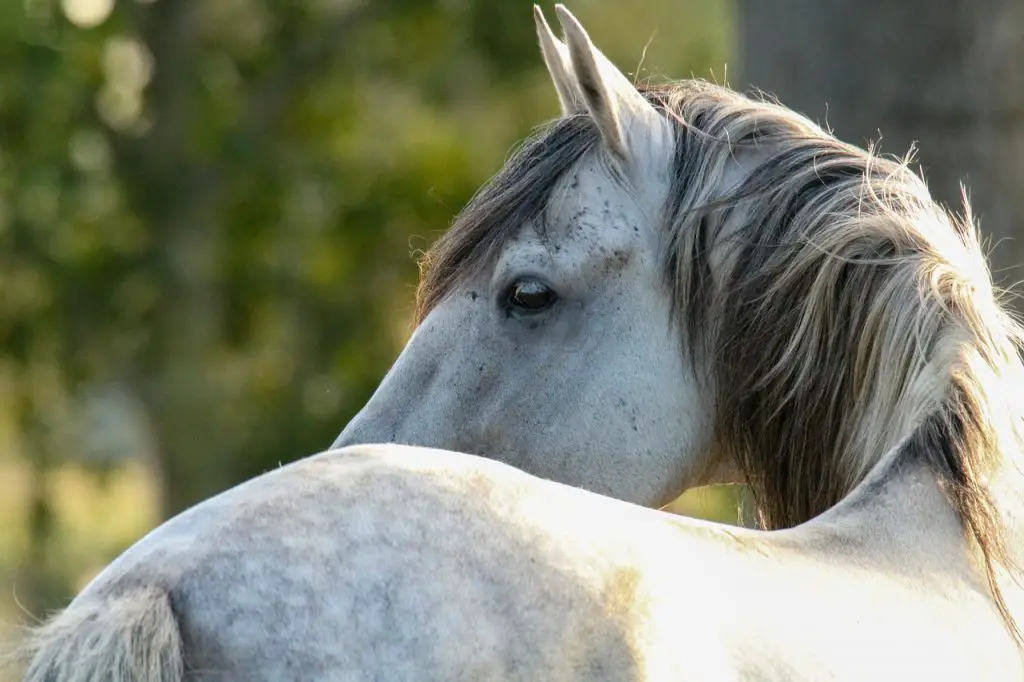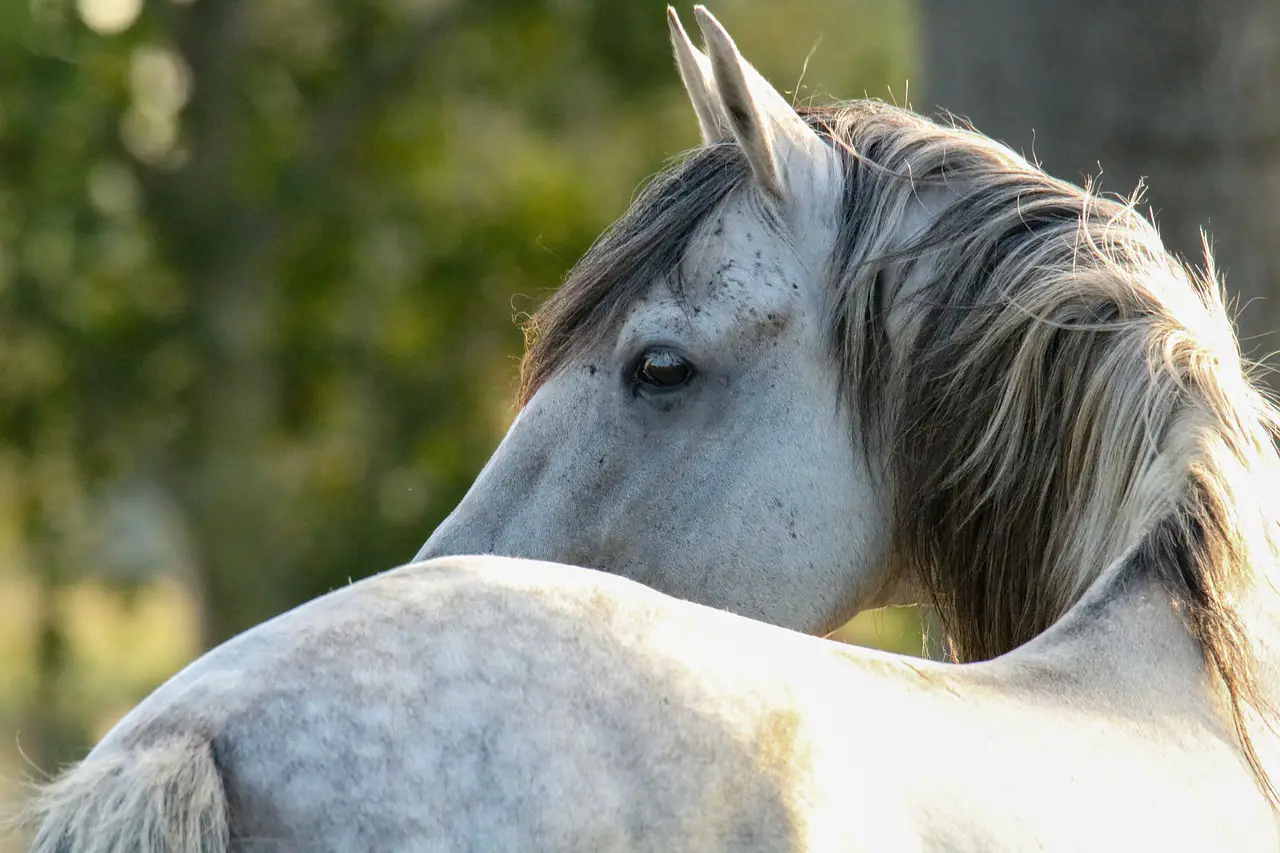Last Updated on April 7, 2022 by Allison Price
Human medicine has many cancer awareness programs. Nearly everyone is screened for at minimum one type of cancer, such as cervical, breast, colon, or prostate. Horses are not at risk for cancers of their internal organs, but skin cancers are quite common. It is very easy to detect these cancers. The easiest way to screen for these tumors is to see them!
Sarcoids are most common skin cancers. These can appear in many forms, including hairless circles, thickened bumps or smooth, firm lumps. The most common areas for growth are around the eyelids, the neck and the ear. These are spread by flies and caused by a virus. There is no evidence of a predisposition to any breed, age, or sex.
Sometimes, sarcoids can be nuisances. They are usually not a problem if they are less than a quarter of an inch in size and they are not near the eyes or where the saddle or bridle rests. If they grow quickly or are located near the eyes or tack points, they can be a problem.
Sarcoids can be difficult to treat. The simple removal of a sarcoid may lead to the mass returning with avengeance. A sarcoid will usually be treated by a veterinarian who also performs other types of surgery. There are several options for treating sarcoid tissue: freezing it (cryotherapy), heating it (laser therapy), injecting or implanting chemotherapy drugs in the area, and/or using a topical cream that can make the body “reject the sarcoid cell(Xterra).
It has never been reported that Sarcoidos spread within the body. Some forms can be very aggressive and difficult to control locally. Ask your veterinarian to check any unusual skin area that is becoming hairless or becomes a lump.

Squamous Cell carcinoma can cause severe skin and mucosa problems (linings) as well as invasive tumors. It’s most common on the skin around the eyes and the external genitalia. While some of these tumors may look like small pink cauliflowers, others are characterized by pitted tissue. They can cause damage to nearby structures and be extremely aggressive locally. Horses with pale skin or genitalia may be at risk. The most common trigger for cancer growth is ultraviolet light exposure.
Squamous cell carcinomas can be very serious and should be treated immediately by a veterinarian. Surgery to remove any abnormal tissue is usually the first thing performed. It is important to remove enough tissue so that tumor cells can be surrounded by normal cells. This margin is approximately as large as your thumb. Sometimes, however, it’s not possible to remove enough tissue without causing injury to the horse. Supplemental therapy is recommended in these situations.
Supplemental therapy may include the injection or implanting of chemotherapy drugs in the tumor area, freezing the tissue (cryotherapy), or radiation therapy. For tumors close to the eyes, drops or cream may be prescribed. The oral drug piroxicam, which may slow down the growth of cancerous cells in horses, is given to some horses.
 Squamous cells carcinomas can sometimes spread within the body, most often to the stomach. They can grow rapidly at their original sites, which is the main risk. Because they tend to be attracted to areas near vital openings (eyes and genitalia), local spread can prove devastating. You should immediately check for any pinking, raised or irritated areas on your horse’s eyes, genitalia, or face.
Squamous cells carcinomas can sometimes spread within the body, most often to the stomach. They can grow rapidly at their original sites, which is the main risk. Because they tend to be attracted to areas near vital openings (eyes and genitalia), local spread can prove devastating. You should immediately check for any pinking, raised or irritated areas on your horse’s eyes, genitalia, or face.
Melanomas, a common type of tumor in gray horses, are more than 80% of all gray horses that have had at least one over the past 10 years. Melanomas can be as small as a blueberry or large enough to cause an orange-colored rash. They are dark, spherical, and often appear in clusters. Most common areas are around the anus and vulva, tail, udder, sheath, and tail. They can also grow on the lips, around the salivary glands and in the eyelids.
Melanomas tend to grow slowly. While single tumors can sometimes be surgically removed, many horses present with multiple masses. These tumors should be monitored unless they grow rapidly near an area of concern. They can also develop in an aggressive, fast-growing form that could spread internally.
Nearly all melanomas are found in gray horses. A melanoma that occurs in a horse of another color may spread or grow quickly. To slow down the growth of melanomas, an oral medication called Cimetidine may be prescribed.
Biopsy for tumors: Sarcoids and squamous-cell carcinomas are the most common skin cancers in horses. There are other skin conditions, some of which can mimic the “big three”, and there are also many rarer ones. Mast cell tumors, fibromas and papillomas can look similar to common cancers. A parasite infection called habronemiasis and an inflammatory condition called collagen granuloma are some examples of non-cancerous conditions.
A biopsy is a procedure that veterinarians might recommend to determine the cause of a skin abnormality or lump. A biopsy is a surgical procedure that involves the removal of a portion or all of a tumor. The tissue that is abnormal is placed in a preservation solution and sent off to a laboratory. After staining cells with dyes and chemicals, a pathologist examines the thin sections of the specimen under a microscope. A microscopic examination will reveal the type of abnormal cells present and report if there are any margins of normal cells around them. The veterinarian will then be able to predict whether or not the abnormal cells will return. Although they are costly, biopsies can be very useful. The veterinarian will often use the biopsy results to determine the best treatment for the horse.
Your veterinarian should be notified if you find an abnormality in the skin of your horse. Your veterinarian has been trained to identify which “lumps” and bumps are concerning and which ones are not. Some lumps and growths can be very dangerous for your horse’s health. Modern veterinary medicine offers many effective treatments for many issues if caught early.


